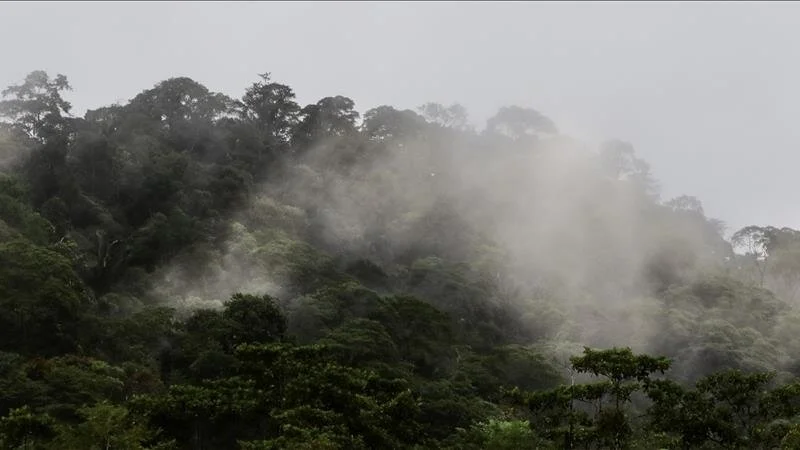LONDON
The wildfire season, typically from June to September at its peak, is starting earlier and lasting longer due to global warming across the world, as tree cover losses from wildfires have almost doubled since 2001.
Forests are acting as a net carbon sink for the world, with an absorption rate of about 7.6 billion metric tons of carbon emissions per year, 1.5 times the annual emissions of the US.
To conserve the world’s natural carbon sinks, the loss of forests needs to be minimized, as they are critical to tackling climate change. However, wildfires brought on by climate change are causing more tree coverage reductions.
Global Forest Watch statistics show that between 2001 and 2021, there were 318 million hectares worth of losses to the world’s forest cover, of which 119 million hectares were attributable to fires.The year 2016 saw the most tree cover losses due to fires at 9.61 million hectares globally, accounting for one-third of all tree cover losses for that year.
The tree cover losses from fires hit 9.3 million hectares in 2021, the second-highest over this 20-year period.
Anita van Breda, a senior director for environment and disaster management at the World Wildlife Fund (WWF), told Anadolu in an exclusive interview that “forests are trying to deal with a number of different stressors at the same time. If temperatures go up, soils become drier. Trees, therefore, are more susceptible to fire risks or fire hazards.”
“They burn more, hotter, and faster. That does more damage to the soil, so then the soil is not able to regenerate and regrow the vegetation that was there,” she added.
Russia, Canada and US top countries with highest losses
Van Breda noted that some places where fires might have been a natural part of the dynamics of the ecosystem, like the southwest of the US and the Mediterranean, now have increased populations either living in them or near them, intensifying fire risks.
“Most people do not want to be around fires or see fires as a risk. They are living closer to these areas, and then this inadvertently increases the fire risks because we have suppressed or eliminated what was a natural fire regime,” van Breda explained.
“Fires are now changing in frequency and coming earlier in the season, lasting longer, and burning hotter,” she said.
Last year was the second-worst wildfire season in Europe, and the first months of this year are following the same trajectory, according to the European Commission, as many winter and spring fires have occurred across the European continent from Ireland to the Balkan region.
“The fire risk is changing, and the risk is multi-dimensional,” van Breda noted, highlighting that areas that have been immune to fires, like the Arctic and Canada, are now experiencing wildfires.
Canada is currently dealing with wildfires that have started the season pretty early, causing the evacuation of about 16,000 people from their homes.
Russia, Canada and the US are the top three countries with the highest tree cover loss due to fires from 2001 to 2021.
Russia had the highest rate of tree cover loss because of fires, with an average of 2.51 million hectares lost per year. Canada ranked second with 1.27 million hectares and the US with 530,000 hectares per year, according to Global Forest Watch data.
Mitigation and adaptation need to go hand in hand
Van Breda, acknowledging that it is hard to completely eliminate all risks, maintained that it is possible to reduce and manage fire risks by giving people tools and information in support of their efforts to tackle fires ranging from a household level to a national level.
“We need to work for mitigation and adaptation at the same time. We have to reduce the amount of carbon emissions and carbon-related pollution as much and as fast as possible. We have to try to turn down the risks that we are creating with these policies and approaches,” she underlined.
She urged governments to step up their aspirations on climate mitigation and adaptation to allow for more awareness and better wildfire practical application and prevention.
According to the United Nations Environment Program, climate and land-use change are projected to make wildfires more frequent and intense, with a global increase in extreme fires of up to 14% by 2030, 30% by 2030, and 50% by the end of the century.

